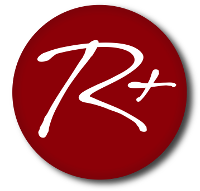Appearances can be deceiving
Beware of over-interpreting photos
In order to being able to act for the benefit of my horse I do not only have to develop an understanding for my horse’s feeling in a certain moment but I also need theoretical knowledge about facial expressions and body language to prevent speculating about my horse’s sentiments. The analysis of behavioral expression is an art itself, and many aspects interact to form the bigger picture. Individual characteristics can be observed, perceived in their degree of clarity, and can be interpreted eventually. In this process, the occurrences of specific characteristics frequently increase the probability for certain emotional states.
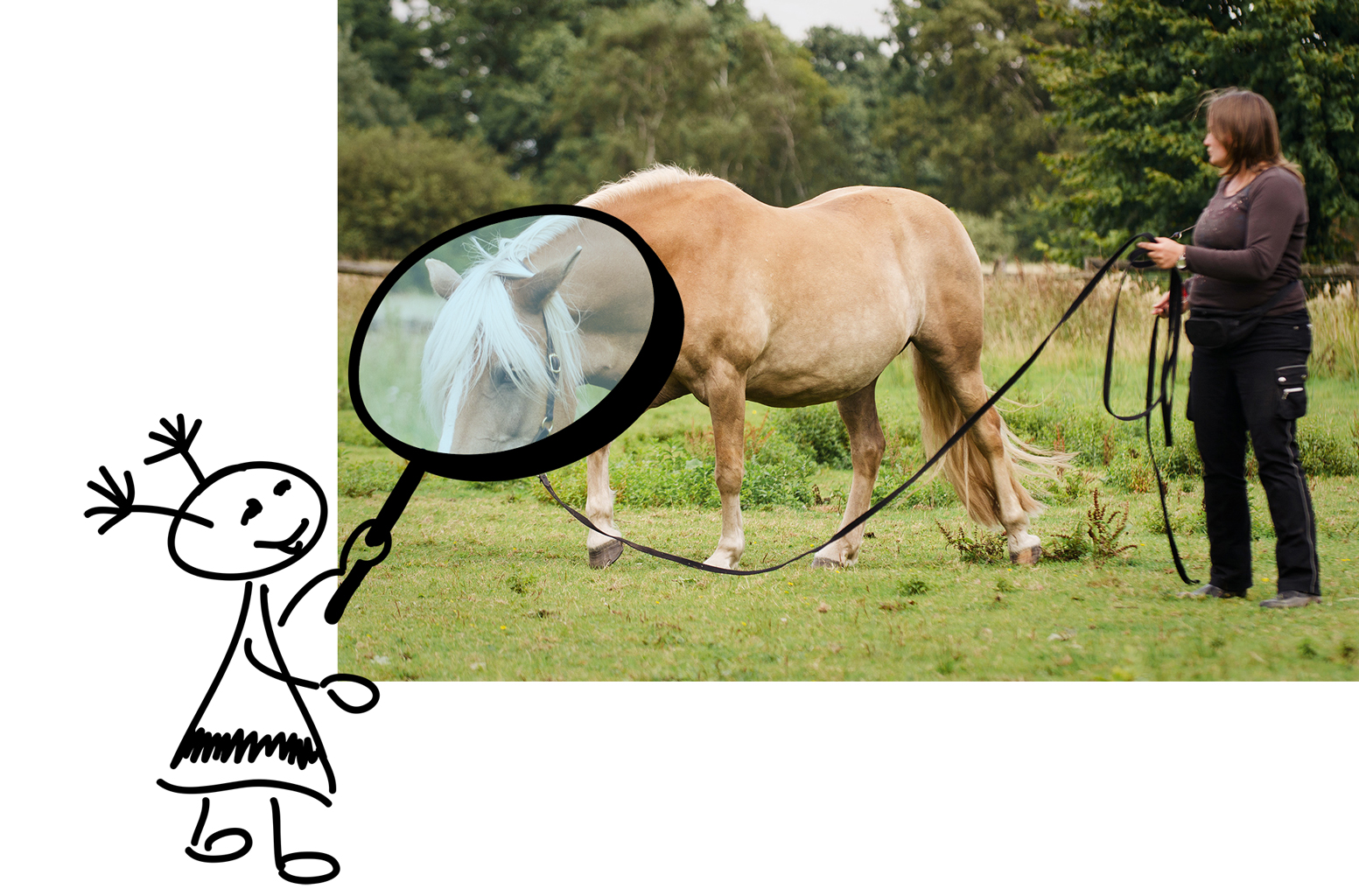
Photos as objects of study
Photos can serve well to train the eye to interpret body language and facial expressions with certainty. On one hand, people are frequently too far away from the horses to perceive minor changes with the naked eye. On the other hand, the direct presence of human beings often influences the animals’ behavior. What is more, videos show many possible changes that follow in quick succession; this transports a huge amount of information, and easily overstrains interested laypersons. Nevertheless, we think it is sensible to take one’s time and use both opportunities – photo and video – for personal instruction. With regard to the progression of occurrences, it has proven successful to train the eye with several photos from the same sequence.
The horse’s behavioral expressions
It is always worth remembering that a horse’s expression can change significantly within split seconds. So, one should be cautious to base a conclusive interpretation of a situation on one single photo. It only depicts a short moment in a horse’s emotional life; not more and not less. Yet, we can gain a lot of experience in analyzing behavior when we use such snapshots, and this can then greatly benefit our analysis of slow-motion sequences in videos.
An example: How close to explosion?
When we look at the first photo of the following sequence most untrained observers will mostly perceive the typical characteristic of a supposedly calm horse. The head hangs down in walk, the movement is not very ground covering, and the muscle tonus is limited; this appears to be a calm horse. Yet, the following photos, taken only a couple of seconds later, clearly show that appearances can be deceiving. Suddenly, we can see flight behavior, and the spectrum of behavioral expression ranges within seconds from bolting in canter to throwing the head up, and bucking. My mare Mausi, as a typical passive stress type, reacts out of treacherous calmness. Yet, warning signals have been present even in the first picture. So, let us have a closer look at all the photos of the sequence:

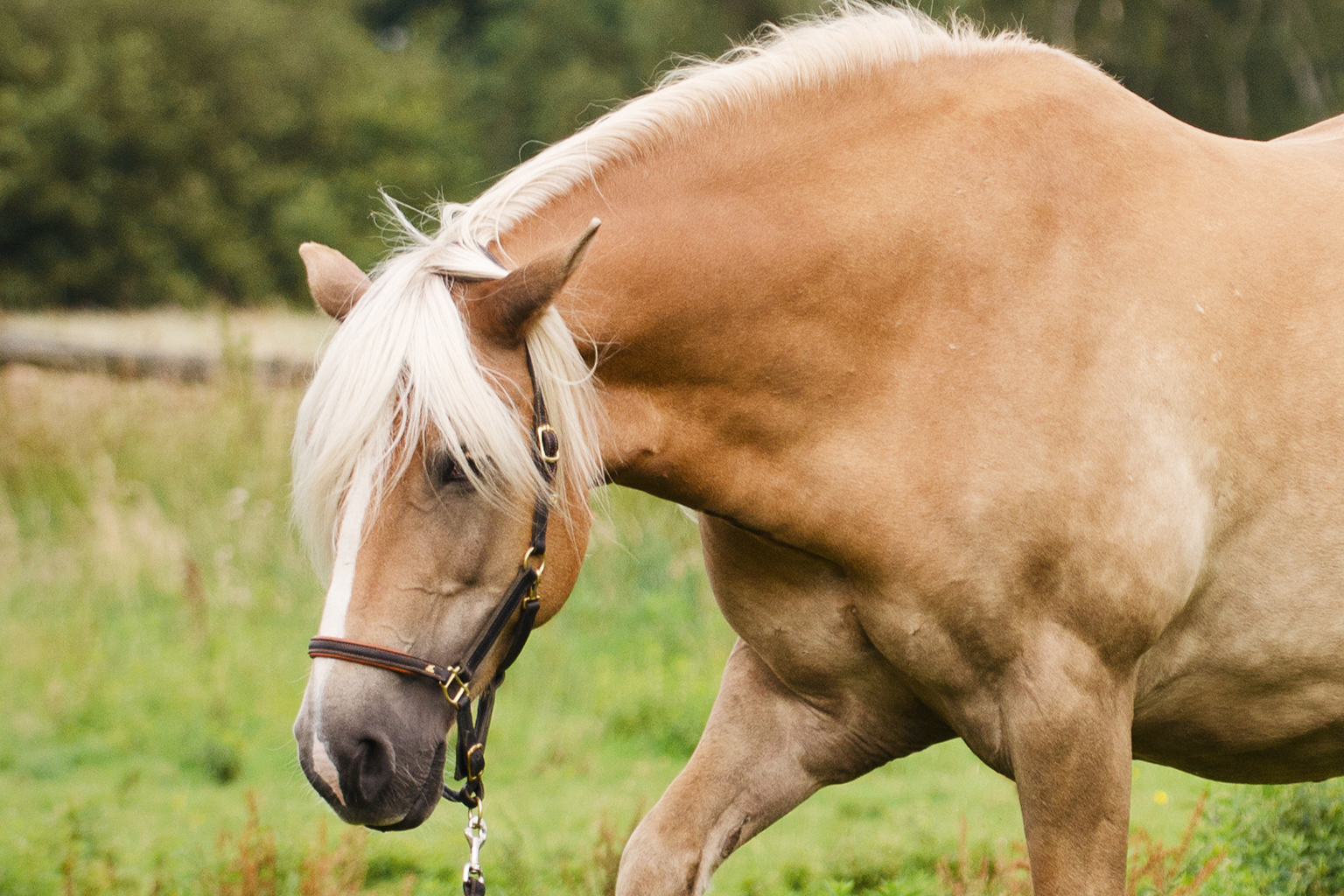
Apparent calmness
As I have said already, we get the wrong impression of a relaxed horse because the head hangs down in walk, the movement is not very ground covering, and the muscle tonus is limited. At closer inspection, however, we can detect subtle signs for an increased amount of tension; the flaccid ears flop out sideways like airplane wings, and the head’s blood vessels begin to swell. In more introverted horses and horses belonging to the passive stress type the just mentioned characteristics as well as moving as if in slow-motion, and an ever more limited muscular tone are all signs for extreme inner tension; yet, they do not indicate a calm horse. The horse already experiences a great amount of stress even though this fact might easily remain hidden to the untrained eye.
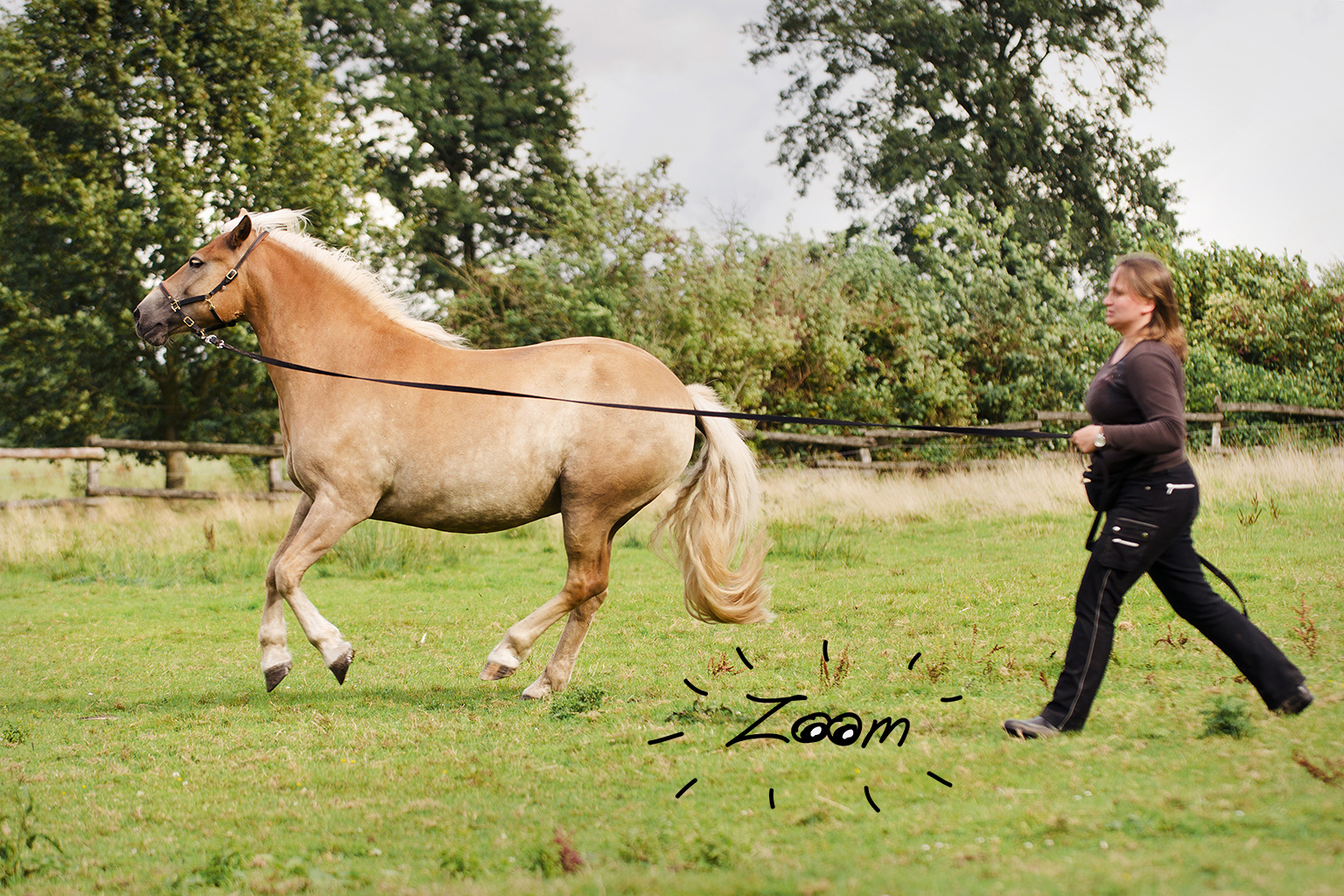
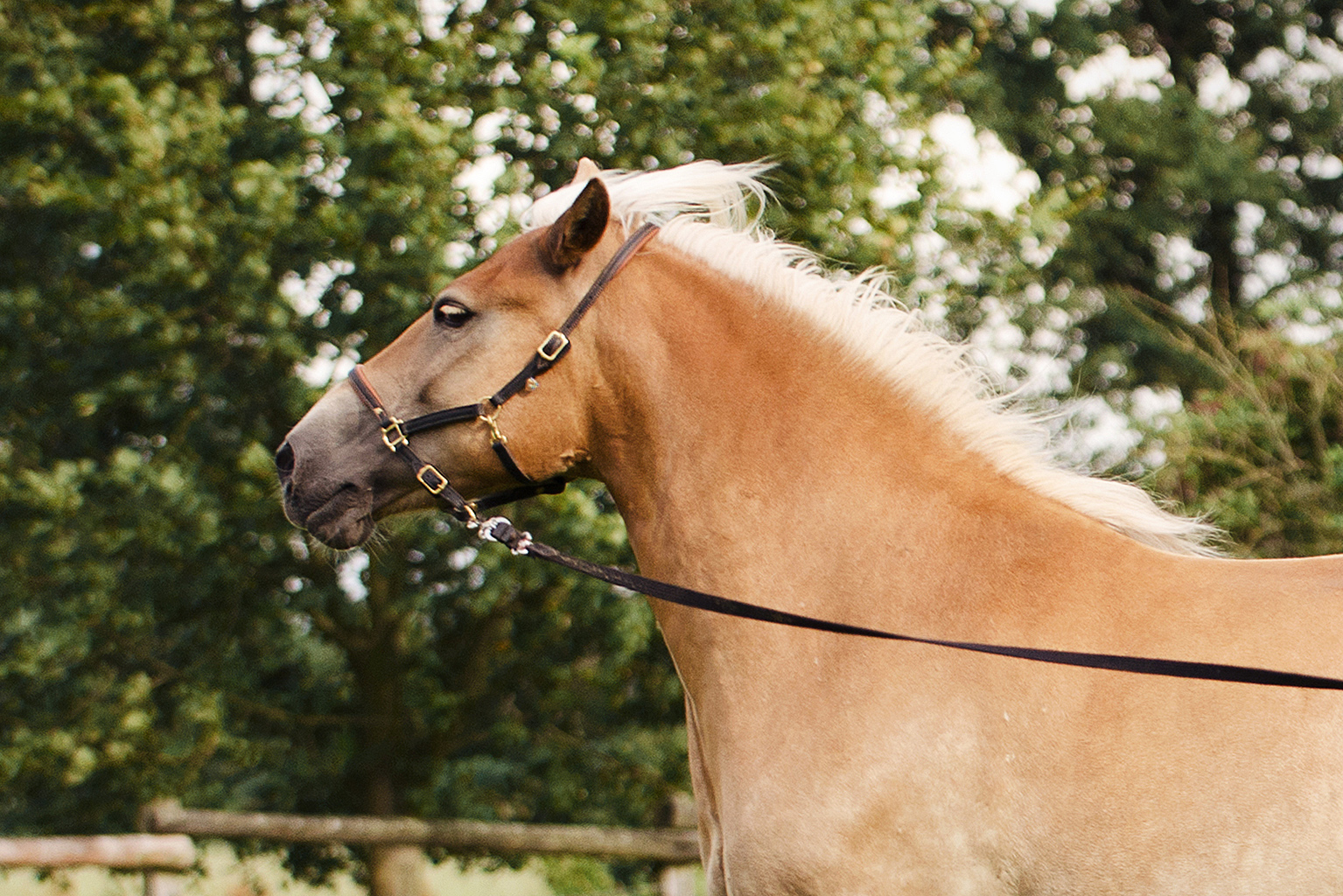
First signs
The horse strikes into canter which indicates the rather increased stress level. The head is held high, and the ears show the typical stress position, they are opened sideways and backwards. The eyes appear smaller due to the heightened stress level, and the lips seem to be thicker.
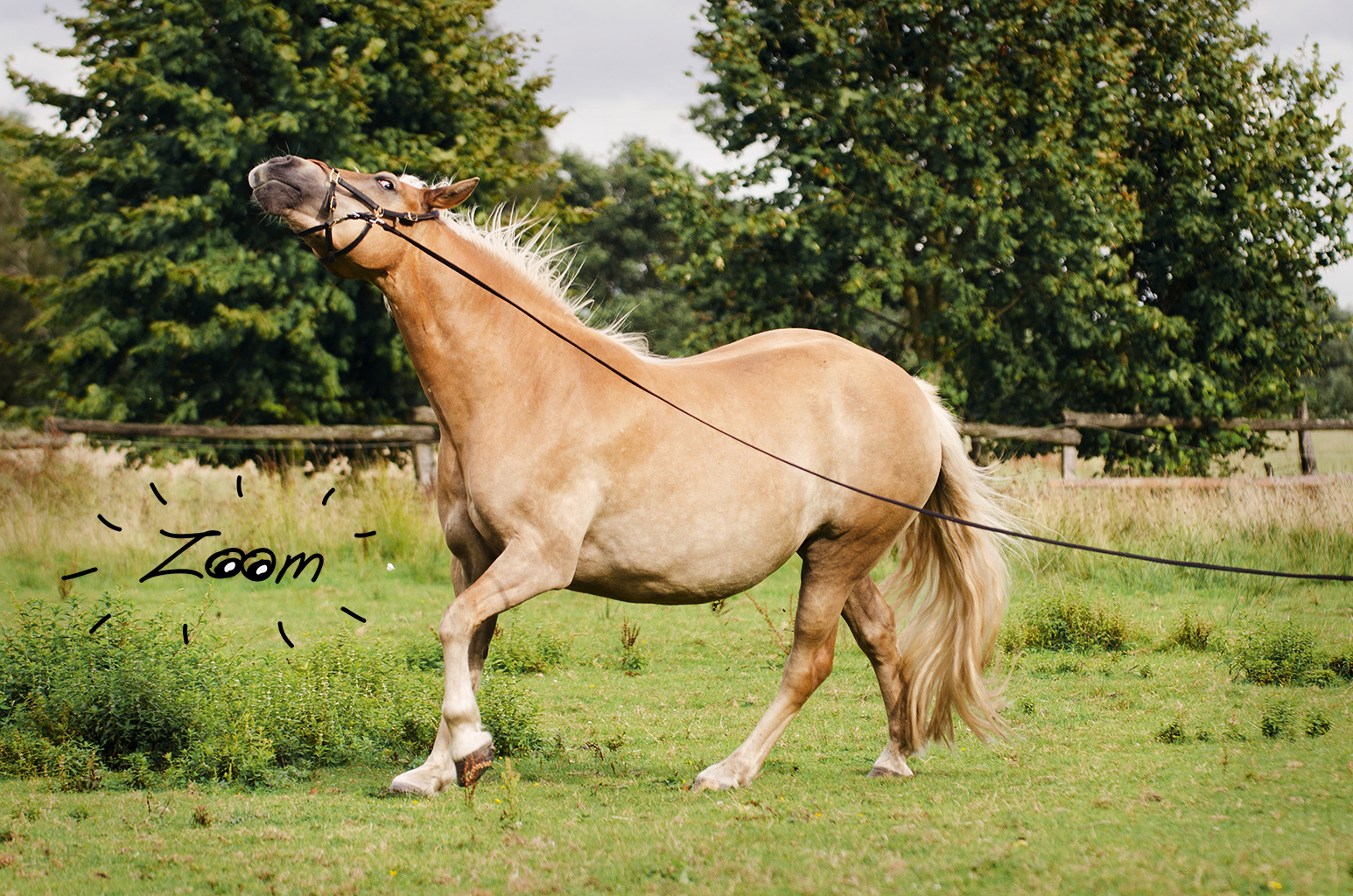
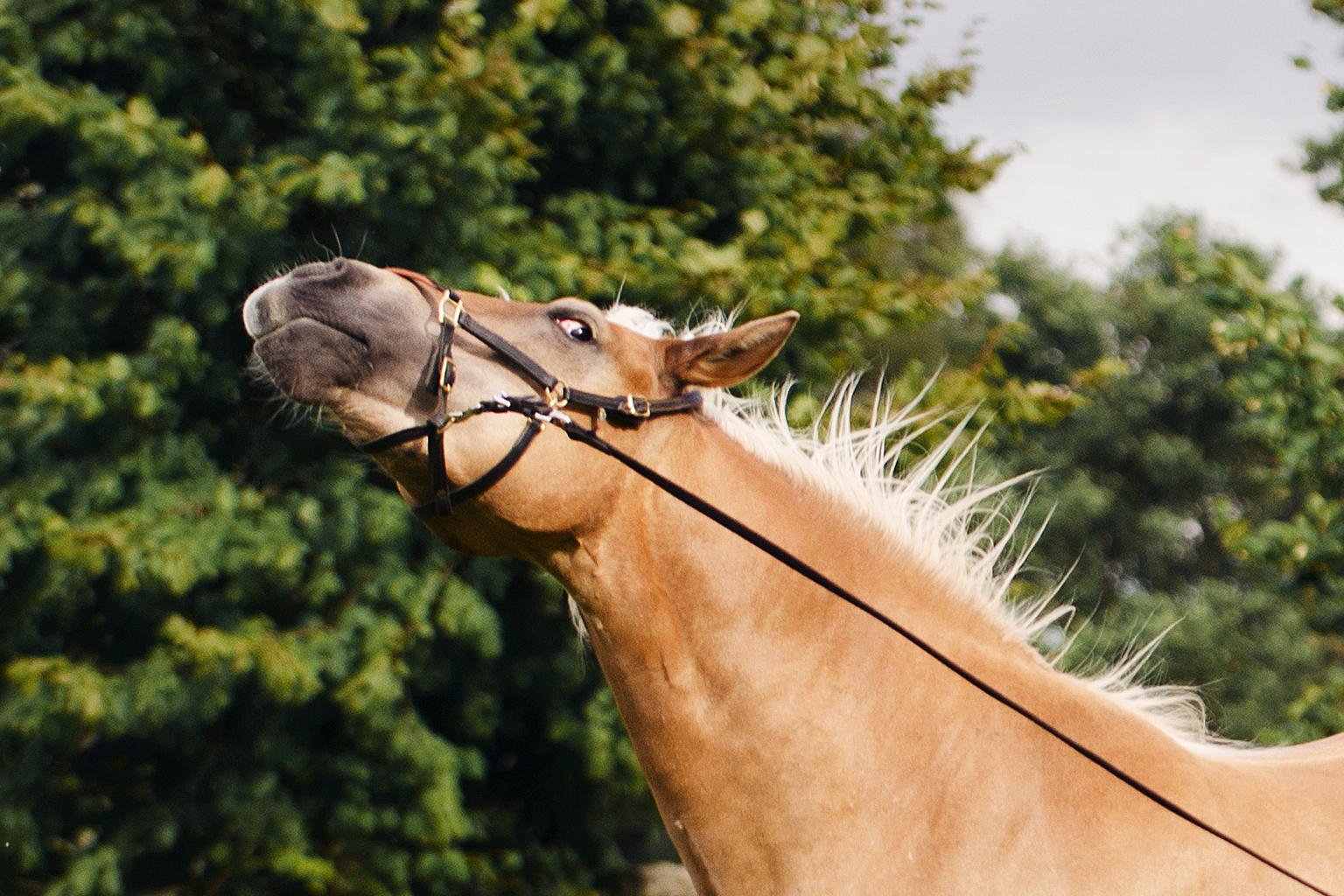
The tension increases
The next moment, the horse perks up its head, rolls the eyes, and starts pulling strongly on the halter.
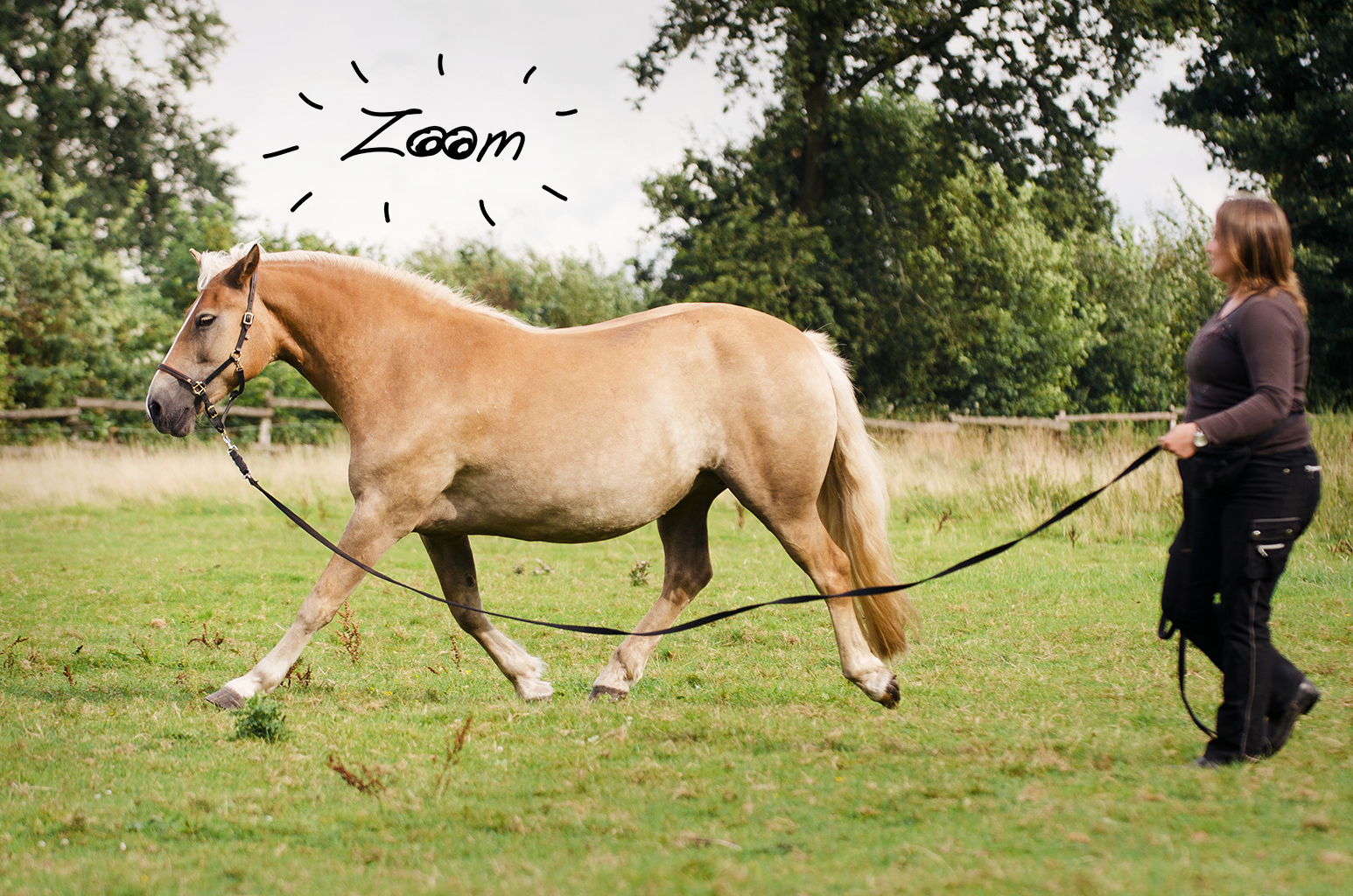
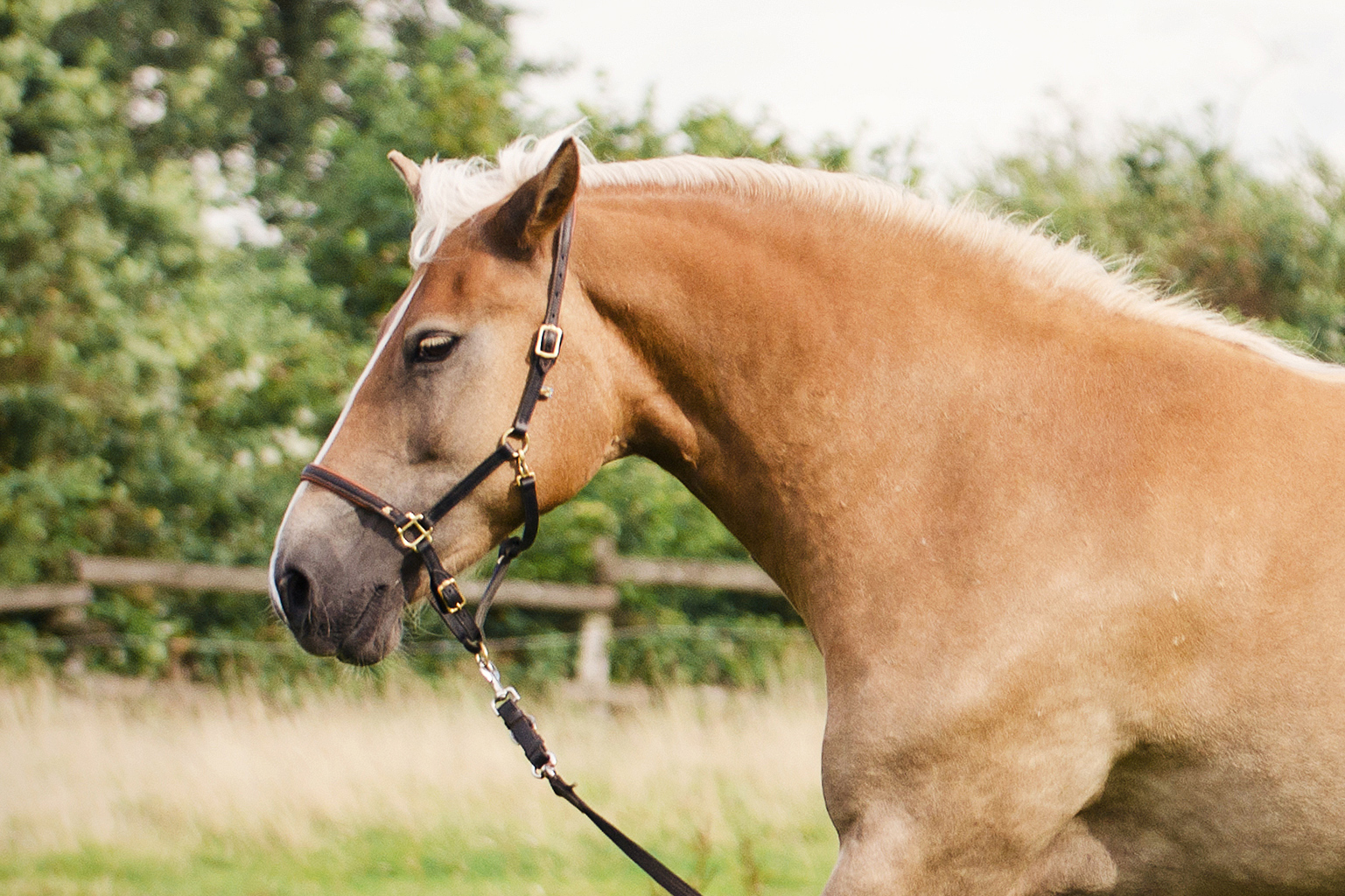
Stress is continuously visible
A rather calm moment follows, and the horse is in trot. Yet, it still clearly communicates signs of extreme inner tension. The eyes still appear very small, and the muscular tone that has been very limited in walk is pretty tense now.
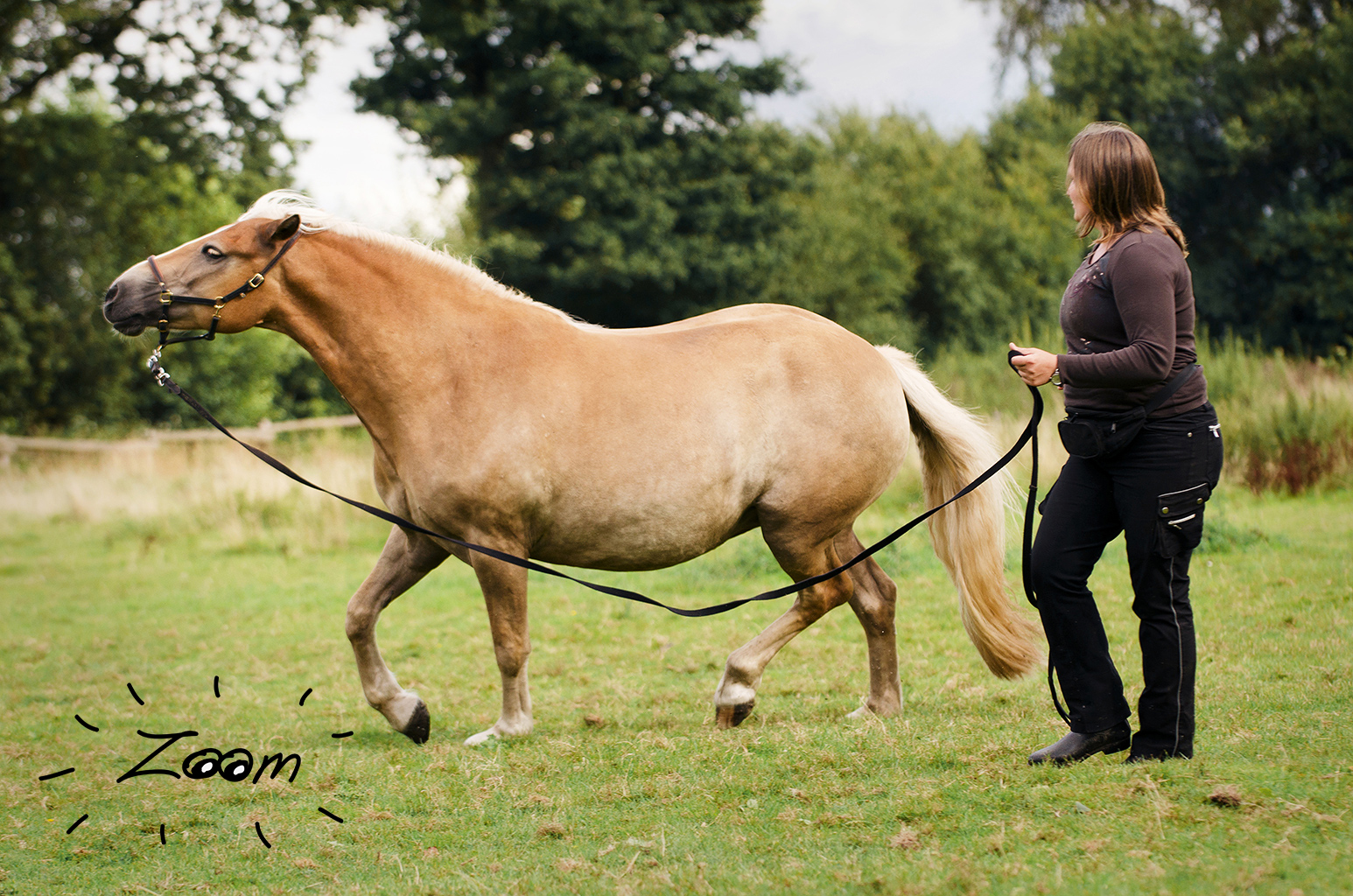
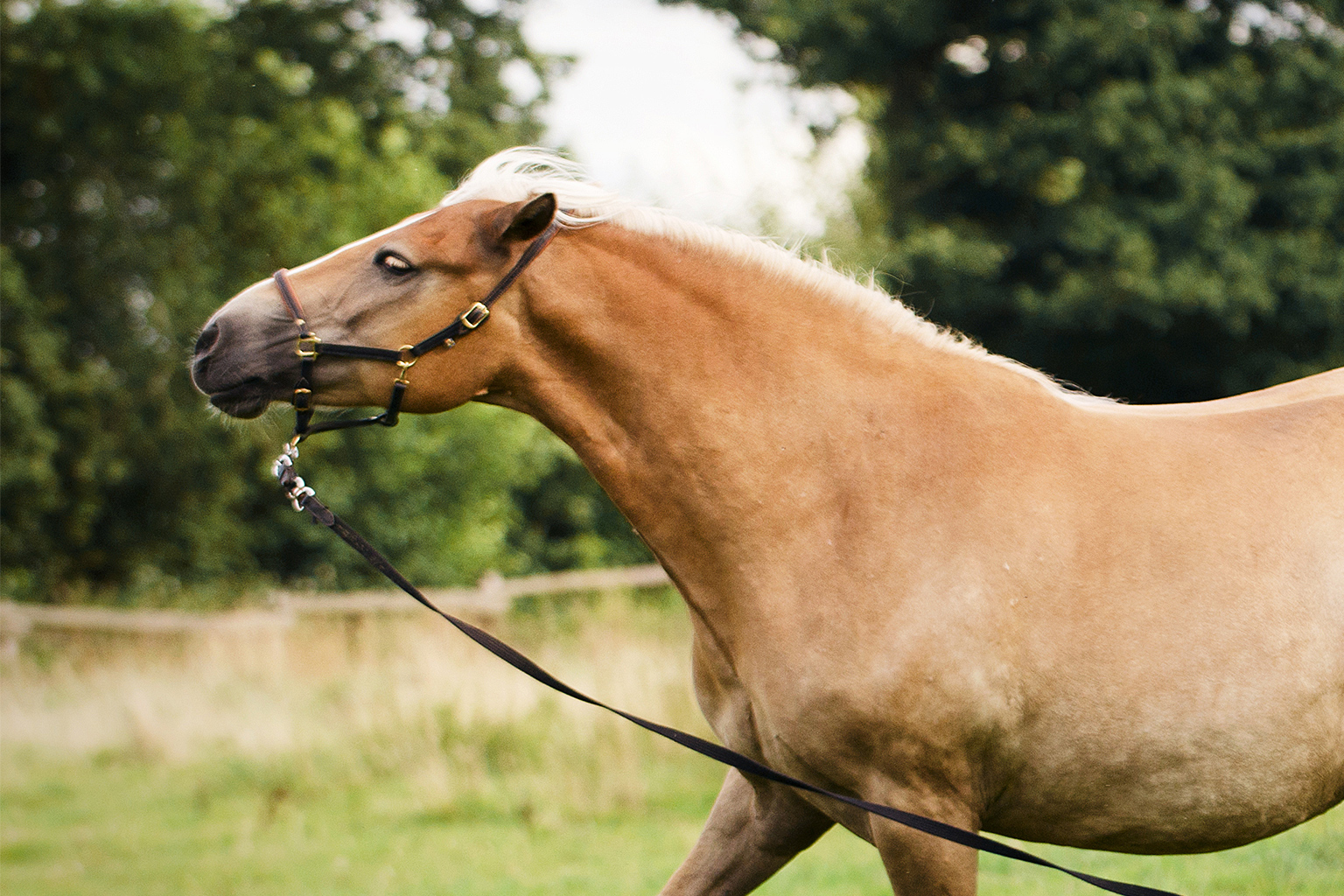
Renewed flare-up
In trot the tension manifests itself in a stiffly held back, and when the horse perks up its head again.
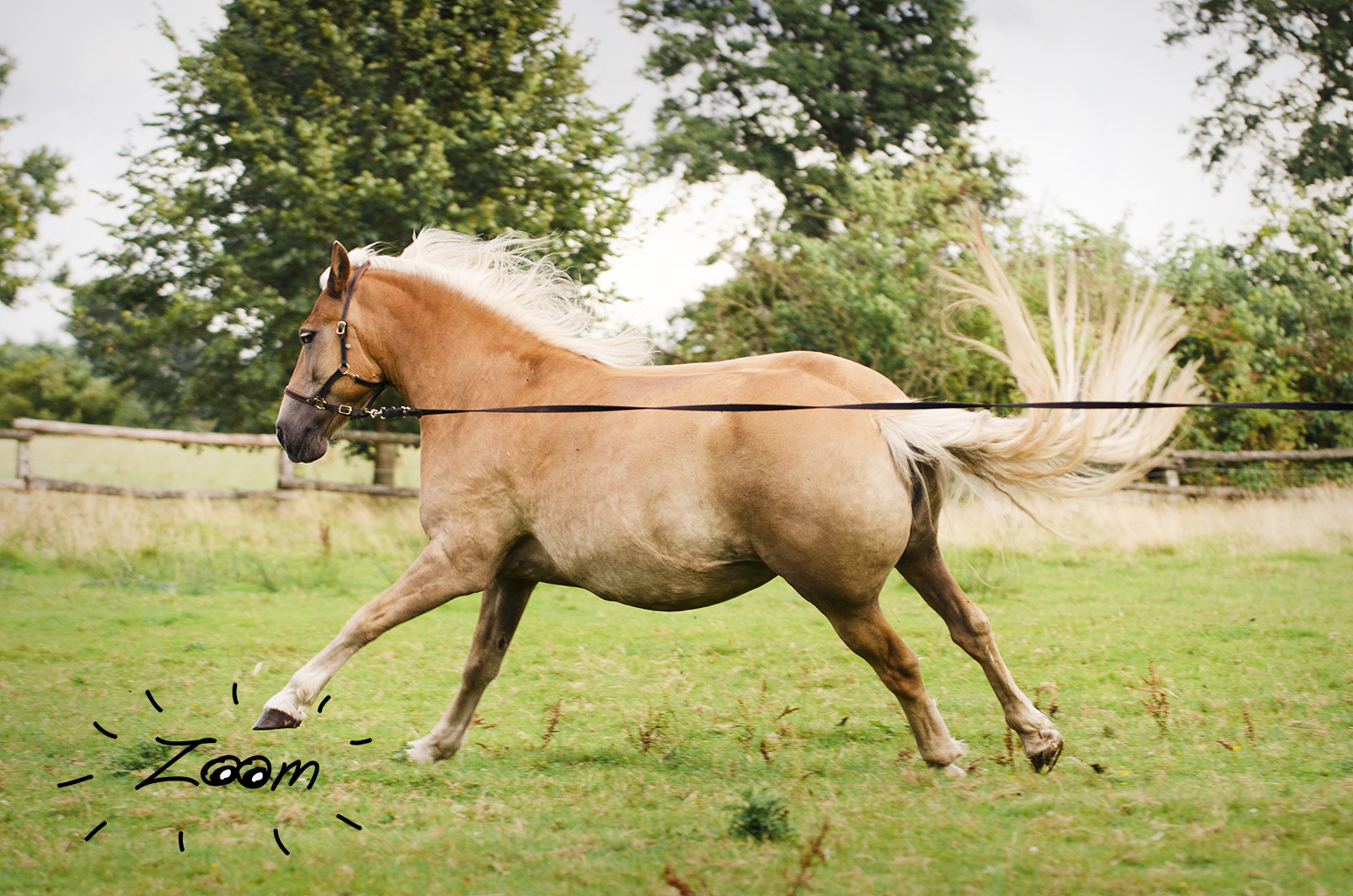
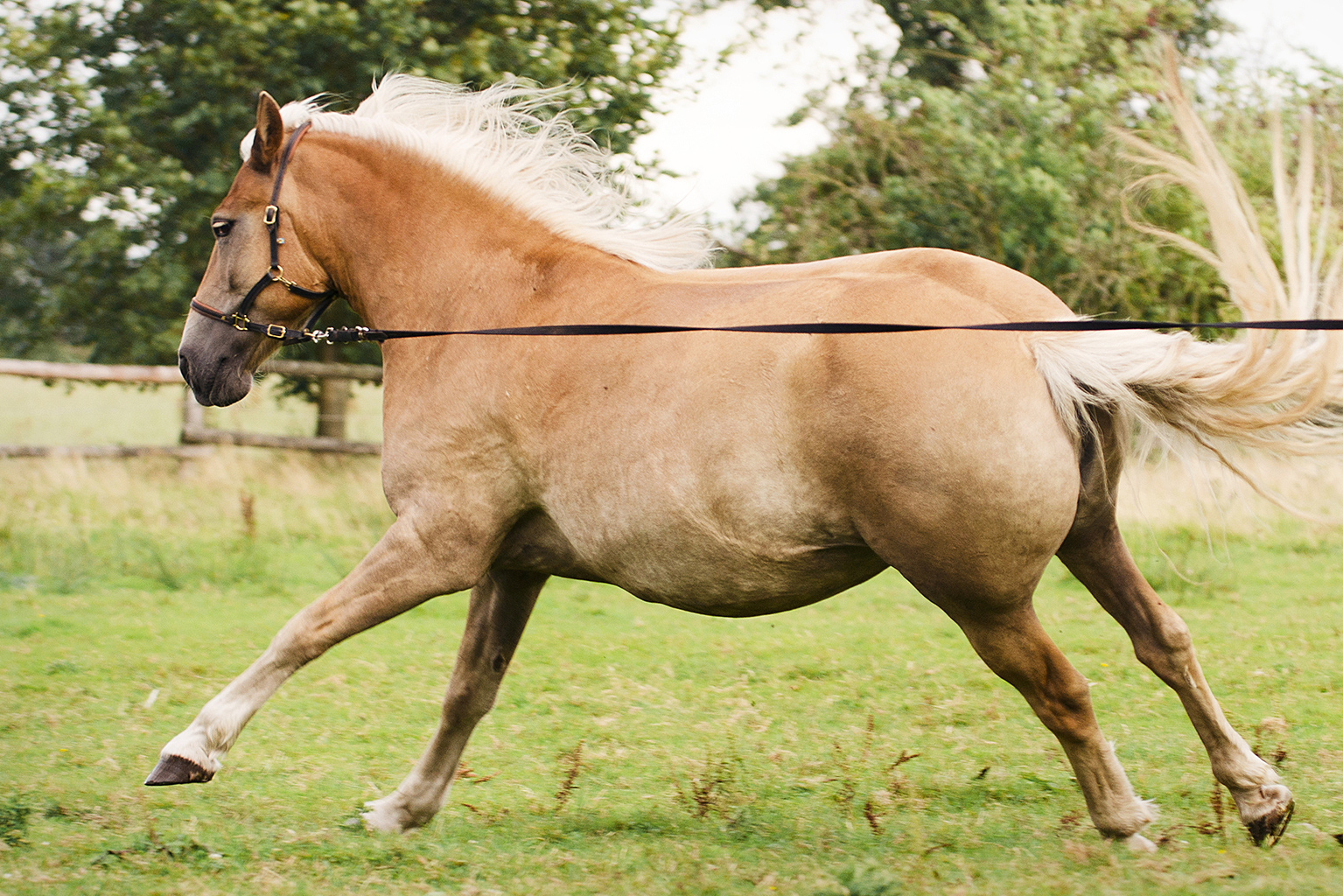
The tension culminates
The still rather increased amount of tension becomes apparent when the horse has another outburst; it bucks, jumps, and swishes its tail.
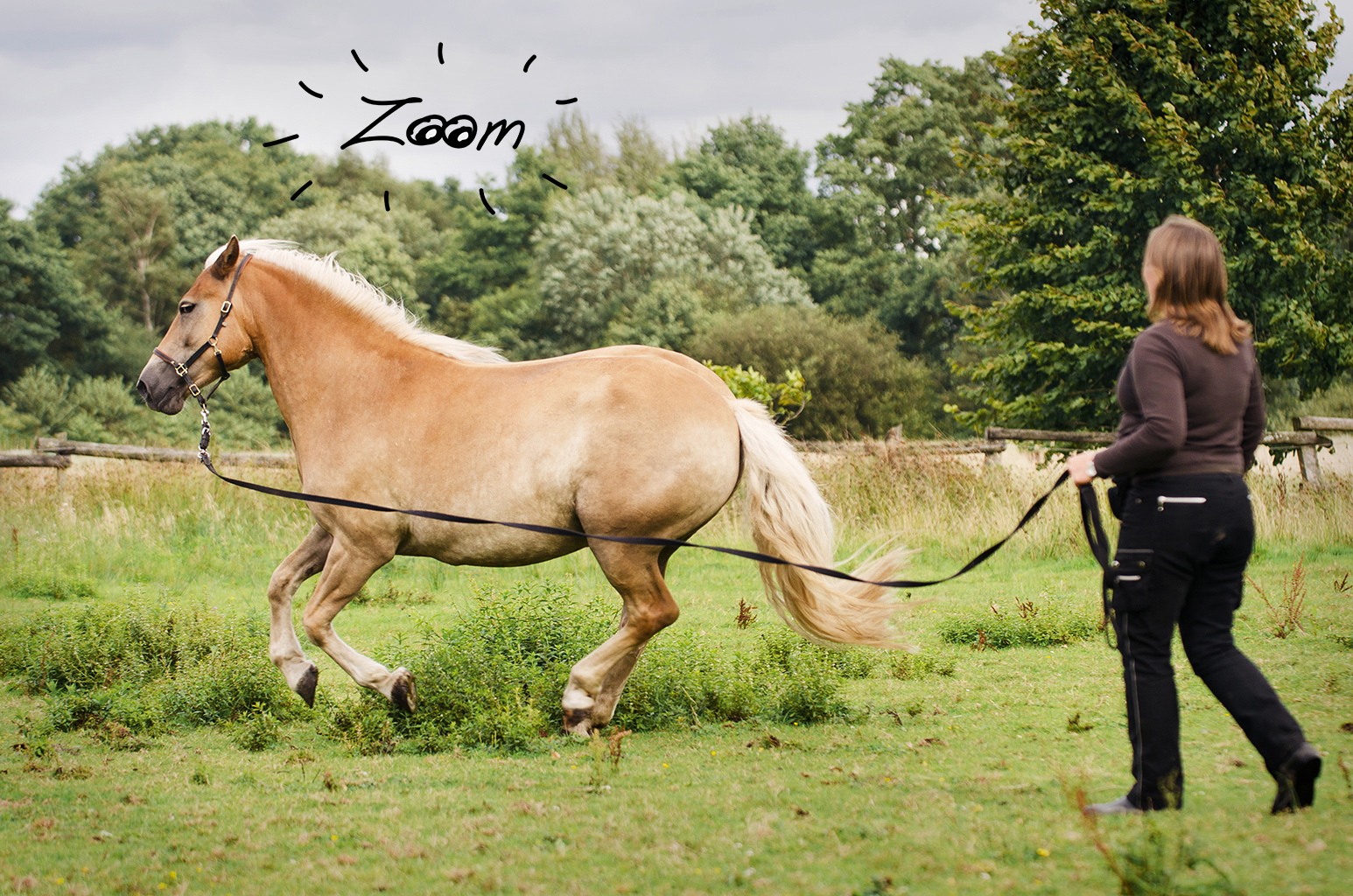
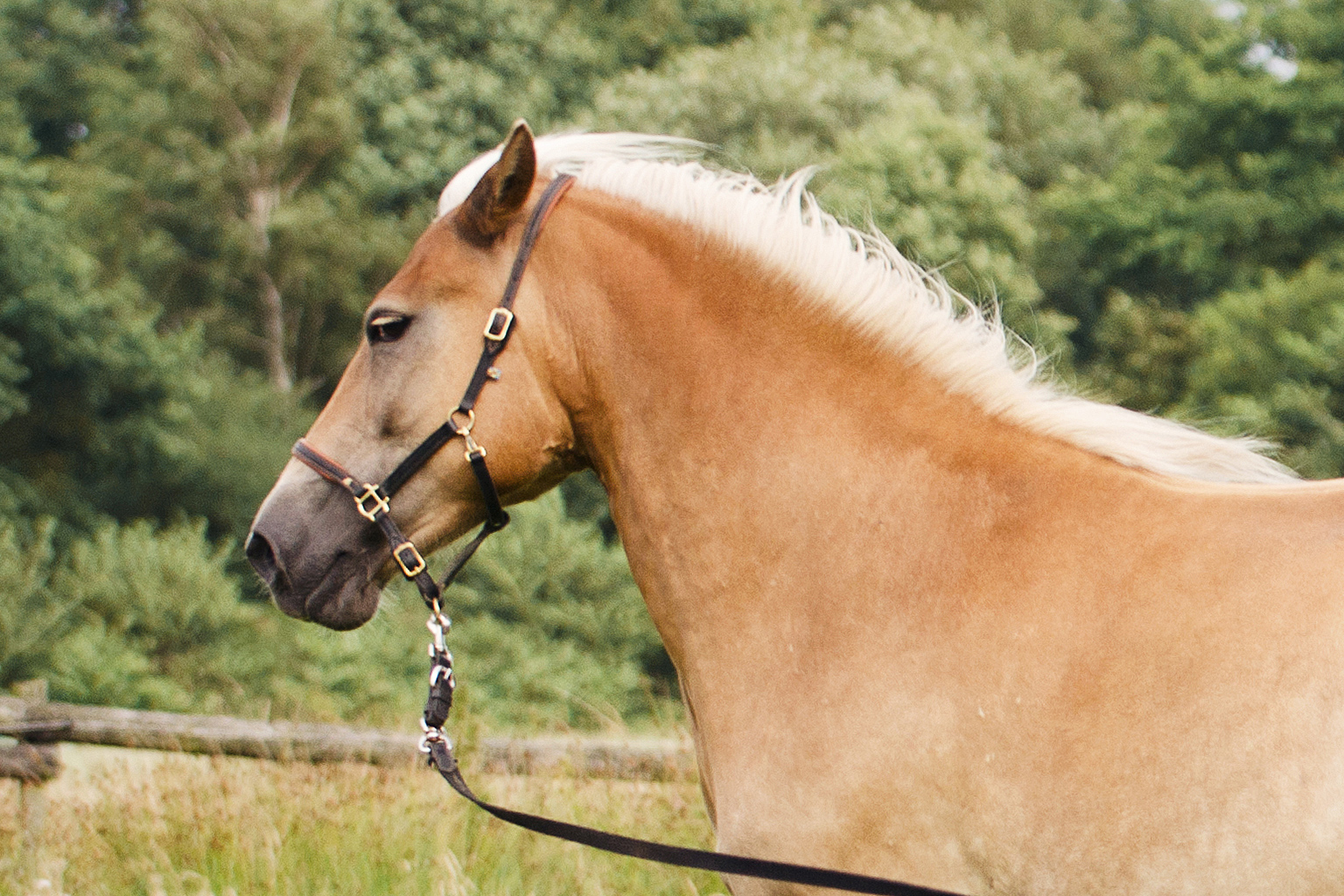
Facial expressions
Canter with stress face
Reflection
The whole sequence clearly does not serve as an example for proper longing but has been created to demonstrate the specific characteristics in the expressive behavior of typical stress types. An exciting external stimulus that had happened right before this situation assured me of my mare being stressed already. We only attached the longe line to the halter so that we could demonstrate and capture the typical reaction of such a stress type. We would not be able to see the whole process of emotional escalation that happens within the Haflinger mare Mausi if we looked at a single snapshot alone. In short, cautious statements about the horses’ emotional world can only be made if we pay attention to all the tiny differences in their facial expressions, their individual personality structure, the situational development, and the whole environment including ourselves as actors in this scene.
Marlitt Wendt & Conny Ranz

